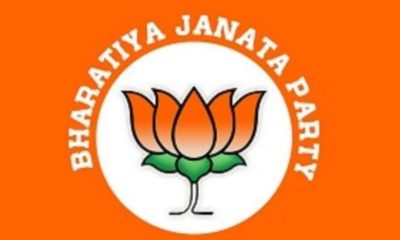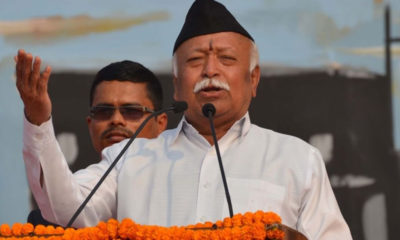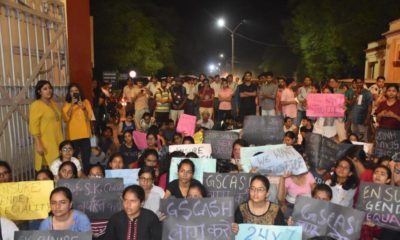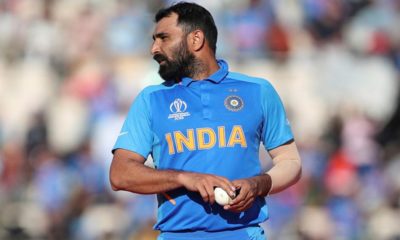Feature
Is “Me-too” movement a bad omen for BJP? Comment below
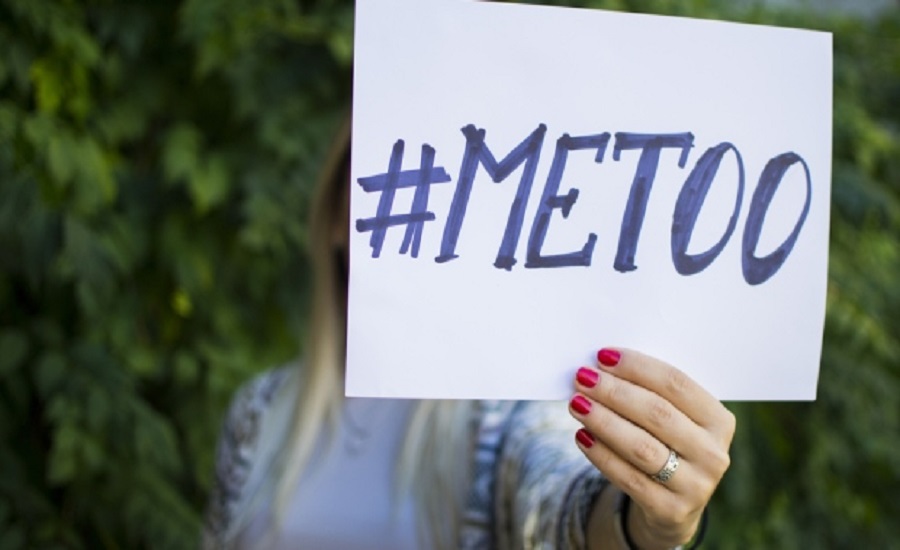
There are several reasons why the Bharatiya Janata Party (BJP) is palpably uneasy about the “Me-too” movement against the sexual harassment of women at the workplace, especially when Minister of State for External Affairs M.J. Akbar is in the line of fire. As a newspaper has noted, several ministers literally ran away when asked about the allegations against Akbar.
There have also been attempts to downplay the complaints both on the grounds of the delay in lodging them, as a Rashtriya Swayamsevak Sangh (RSS) luminary argued, and as an issue of concern mainly to the urban elite.
One probable explanation for the BJP’s unease is the party’s general unwillingness to be seen as being pushed around.
It doesn’t want to take a decision on, say, the dismissal of the minister as demanded by the Congress and others, including the media, lest it is seen as having been taken under pressure. The party apparently feels that such a step will hurt the party’s macho image.

Another reason for the BJP’s hesitancy in, for instance, asking the minister to cut short his foreign trip is that it is unused to dealing with an issue of private sexual (mis)behaviour. This was the reason why it recused itself from the hearing on the case of gay rights in the Supreme Court, leaving it to the “wisdom of the court” to take a decision on its own.
As at present, there was also similar prolonged silence after the rape and murder of a minor girl in Kathua till a BJP spokesperson accused the opposition of communalising the incident.
The party is usually at its articulate best when it can lambast the opposition for being anti-national as on the Rafale controversy. Or when it can hold forth on the “termites” identified in the National Register of Citizens dealing with illegal immigrants.
Or when it can side with the women devotees of the Sabarimala temple who are against the Supreme Court’s judgment allowing — in its “wisdom” — the entry of women of all ages into the shrine.
But the “Me-too” movement, with its distinctly modern, feminist ambience, is not quite what a party guided by the patriarchal RSS can easily accept. Besides, as BJP MP Udit Raj has pointed out, the complainants are not all “goddesses” who have to be implicitly believed.

What must be of concern to the BJP is the possibility that if the pro-women movement gains ground, it can lead to other path-breaking initiatives such as criminalising marital rape.
Given the sensitive nature of the movement, the party is unable to dismiss it as “manufactured” dissent as it did in the case of those who returned their awards in protest against the government’s functioning.
The involvement of the middle class — the Lutyens’ clique, as the upper class denizens of Delhi’s privileged living space are derisively called by the saffron brotherhood — is another aspect of the scene which will not be to the BJP’s liking.
Considering that the party’s 2014 success was based on the support which it received from the middle class, among others, any sign of their disenchantment will be a cause of worry to the BJP. It goes without saying that the Congress and other opposition parties will lose no time in taking advantage of the BJP’s discomfiture.
At the same time, it is no secret that the misconduct of uncouth men in influential positions is not a new phenomenon. Like the proverbial casting couch in the film industry, such lewd behaviour has long been prevalent in all offices, including the ivory towers of journalism.
The question is why has it taken so long for the delinquency of the adults to be exposed when it was always known. Why were the media barons silent when they must have known how their star scribes were sexually exploiting young interns? It is only now that a few heads have rolled in newspaper offices.
It has taken the uncommon boldness of a few, starting with Tanushree Dutta’s complaint against Nana Patekar, for the dam to burst. The next step will be to see how the law takes its own course since the sexual peccadilloes of powerful men fall in the category of criminal offences.
There are, of course, a few who are already in the dock, such as a former editor of Tehelka. But will the powers that be show as much eagerness to go after the big fish as they do when chasing the alleged financial misdeamenours of political opponents and critical media houses?
For the BJP, the outing of “dirty” secrets by a number of intrepid women has come at an inopportune time.The party was hoping to ride into the forthcoming electoral battles in the five states this winter on the issues of “termites” eroding the country’s demographic scene and the past misdeeds of the “naamdars” or opposition dynasts.
But, suddenly, a group of bold women has queered the pitch for the party.
Entertainment
Meghalaya Reserves Legalized Gambling and Sports Betting for Tourists

The State Scores Extra High on Gaming-Friendly Industry Index
Meghalaya scored 92.85 out of 100 possible points in a Gaming Industry Index and proved to be India’s most gaming-friendly state following its recent profound legislation changes over the field allowing land-based and online gaming, including games of chance, under a licensing regime.
The index by the UK India Business Council (UKIBC) uses a scale of 0 to 100 to measure the level of legalisation on gambling and betting achieved by a state based on the scores over a set of seven different games – lottery, horse racing, betting on sports, poker, rummy, casino and fantasy sports
Starting from February last year, Meghalaya became the third state in India’s northeast to legalise gambling and betting after Sikkim and Nagaland. After consultations with the UKIBC, the state proceeded with the adoption of the Meghalaya Regulation of Gaming Act, 2021 and the nullification of the Meghalaya Prevention of Gambling Act, 1970. Subsequently in December, the Meghalaya Regulation of Gaming Rules, 2021 were notified and came into force.
All for the Tourists
The move to legalise and license various forms of offline and online betting and gambling in Meghalaya is aimed at boosting tourism and creating jobs, and altogether raising taxation revenues for the northeastern state. At the same time, the opportunities to bet and gamble legally will be reserved only for tourists and visitors.
“We came out with a Gaming Act and subsequently framed the Regulation of Gaming Rules, 2021. The government will accordingly issue licenses to operate games of skill and chance, both online and offline,” said James P. K. Sangma, Meghalaya State Law and Taxation Minister speaking in the capital city of Shillong. “But the legalized gambling and gaming will only be for tourists and not residents of Meghalaya,” he continued.
To be allowed to play, tourists and people visiting the state for work or business purposes will have to prove their non-resident status by presenting appropriate documents, in a process similar to a bank KYC (Know Your Customer) procedure.
Meghalaya Reaches Out to a Vast Market
With 140 millions of people in India estimated to bet regularly on sports, and a total of 370 million desi bettors around prominent sporting events, as per data from one of the latest reports by Esse N Videri, Meghalaya is set to reach out and take a piece of a vast market.
Estimates on the financial value of India’s sports betting market, combined across all types of offline channels and online sports and cricket predictions and betting platforms, speak about amounts between $130 and $150 billion (roughly between ₹9.7 and ₹11.5 lakh crore).
Andhra Pradesh, Telangana and Delhi are shown to deliver the highest number of bettors and Meghalaya can count on substantial tourists flow from their betting circles. The sports betting communities of Karnataka, Maharashtra, Uttar Pradesh and Haryana are also not to be underestimated.
Among the sports, cricket is most popular, registering 68 percent of the total bet count analyzed by Esse N Videri. Football takes second position with 11 percent of the bets, followed by betting on FIFA at 7 percent and on eCricket at 5 percent. The last position in the Top 5 of popular sports for betting in India is taken by tennis with 3 percent of the bet count.
Local Citizens will Still have Their Teer Betting
Meghalaya residents will still be permitted to participate in teer betting over arrow-shooting results. Teer is a traditional method of gambling, somewhat similar to a lottery draw, and held under the rules of the Meghalaya Regulation of the Game of Arrow Shooting and the Sale of Teer Tickets Act, 2018.
Teer includes bettors wagering on the number of arrows that reach the target which is placed about 50 meters away from a team of 20 archers positioned in a semicircle.
The archers shoot volleys of arrows at the target for ten minutes, and players place their bets choosing a number between 0 and 99 trying to guess the last two digits of the number of arrows that successfully pierce the target.
If, for example, the number of hits is 256, anyone who has bet on 56 wins an amount eight times bigger than their wager.




